25th
- Wales played their first international football match in 1876, losing 4-0 to Scotland in Glasgow. Five years and eight matches later they recorded their first win, beating England 1-0 at Blackburn.
- Visitors to Hampstead Heath in north London could have been forgiven for thinking they had somehow taken a wrong turn and ended up in Norway on this day in 1950. The unexpected sight of a nearly full-size ski jump, complete with real snow and skiers, on a sunny March day in southern England, was enough to make the most broad-minded of observers do a double-take. The snow, and most of the skiers, were indeed from Norway, but the ski jump was the creation of the Central Council of Physical Recreation, alongside the Ski Club of Great Britain and the Oslo Ski Association. The team of 25 Norwegian skiers brought the snow with them, 45 tons of it, packed in wooden boxes insulated by dry ice. The jump itself was supported by a tower of scaffolding 60ft (18.29m) high, giving skiers a 100ft (30.48m) run-up to the jumping point, 12ft (3.66m) above the ground. Modern ski jumps reach 200ft – 300ft (60m – 90m), but skiers on Hampstead Heath only had enough room to jump to about 90ft (27.43m). The London ski jumping competition, as it is known, held a trial contest the previous evening involving only Norwegian skiers. The event the crowd was waiting for, however, was this afternoon’s contest between Oxford and Cambridge University. Tens of thousands of people gathered in the sunshine to watch the University Challenge Cup. It was the first time ski jumping had been seen by most of the crowd. A broadcast commentary on the competition kept everyone informed of the quality of each jump. Spectators, however, seemed to be more interested in how deep each skier disappeared into the straw laid at the bottom of the run. In the end, the Oxford team, captained by C. Huitfeldt, won the competition, while the London challenge cup – open to all competitors – was won by Arne Hoel of Oslo. An official said of the event, “This exhibition has been such an unqualified success that we are very much hoping it will become one of the country’s major sporting features.” The ski-jump competition was never held again, despite several attempts to revive it. The competition numbered among the last major events to use real snow to create ski conditions. The first artificial snow was made two years later, in 1952, at Grossinger’s resort in New York, USA.
- Two boys who would later become Britain’s best middle-distance runners competed in the 1972 British Schools Cross Country Championship, Intermediate division. Steve Ovett came home in second place while his great rival of the future, Sebastian Coe, finished down the list in 10th position.
- In 1980 the British Olympic Association (BOA) voted by a large majority to defy the government and send athletes to the Olympic Games in Moscow. Fifteen sports voted to accept the invitation to participate in the Olympics in July. Only hockey opposed travelling to Moscow, while fencing, equestrian, swimming and yachting deferred the decision. The decision was a blow to the government which issued a statement claiming that Downing Street “seriously regrets” the BOA decision. Earlier in the week the government placed pressure on the BOA not to attend the games after the Soviet Union’s invasion of Afghanistan last year. Sir Denis Follows, the chairman, said the “rather heavy letter” received from Mrs Thatcher after a commons debate had been placed before the committee ahead of the meeting. He added while he was sympathetic to the government’s stance “we believe sport should be a bridge, and not a destroyer”. Earlier that week Michael Heseltine, secretary of state for the environment, outlined the government’s hope of taking sporting sanctions against the Soviet Union in a parliamentary written answer in the House of Commons. Mr Heseltine stressed there would be no government funding or attendance in support of the BOA’s presence in the games in Moscow. Monique Berlioux, the director of the International Olympic Committee (IOC), said earlier the IOC might provide funds for teams attending the games against their government’s wishes. It came as National Olympic committees from the United States and 15 Western European countries, who met in Brussels during the week, rejected calls for a boycott of the Moscow Olympics. In the end many countries joined the US-led boycott of the 22nd Olympic Games in 1980 because of the Societ invasion of Afghanistan the previous December. Almost 6,000 competitors from 81 countries arrived to compete in 22 sports compared to the 10,000 athletes expected. The Soviet Union took home 197 medals, Britain, 21. The IOC condemned the boycott and said athletics should not be concerned with politics although sport had long been a tool in international affairs. Ironically, at the time South Africa was banned from participating because of its policy of discriminating against those of colour
- In 1990 the Wales rugby union team rounded off their worst ever season in the International Championship with a 14-8 defeat by Ireland at Lansdowne Road. It was the first time they had lost all four games in a championship season.
- Aldershot FC lost their fight for survival in 1992, folding with debts of £1.2million.
- British female track and field athlete Jean Pickering (nee Desforges) died on this day in 2013 aged 83. She made her international debut at 18, competing in the 80m hurdles for GB v France in 1947 but missed the 1948 Olympics due to illness. In the 1950 European Championships she finished 5th in the 80m hurdles and was part of the gold medal winning 4×100m relay team, at the 1952 Games in Helsinki she again finished 5th in the 80m hurdles and won bronze in the 4x100m. In 1953, Jean broke a British record and became the first British woman to long jump over 20 feet, when jumping 6.10 m in Nienburg, Germany. She was European Champion in the long jump, in the 1954 European Championships in Berne, Switzerland, with a leap of 6.04m. At the same championships Jean finished 6th in the 80m hurdles. She remains the only British athlete to have won a European gold medal in both a track and a field event. In the 1954 Commonwealth Games she won a bronze medal in both the long jump and 80m hurdles. Jean was an eight-time British champion in athletics, having won the 80m hurdles four times (1949, 1952, 1953 and 1954), the long jump twice (1953 and 1954), and the pentathlon twice (1953 and 1954). She ended her career with personal bests of 11.1secs for both the 100-yard dash and the 80m hurdles. She also broke the British record for the pentathlon in her career, accumulating a total of 3997 points in 1953. She married Ron Pickering, a prominent athletics coach and television commentator in 1954 and the couple had two children, a daughter (Kim) and a son (Shaun Pickering) who went on to athletic success in his own right, following in his mother’s footsteps, going on to become an Olympian and Commonwealth Games medallist in the shot put. Her husband’s death in 1991 led Jean to create the Ron Pickering Memorial Fund to help support athletics in Britain at a grass-roots level. By 2013, the Memorial Fund had given out £1.3 million in grants to young athletes, coaches and athletics groups. Such was the breadth of the fund’s support; around 75% of the British track and field team have been Ron Picking Memorial Fund grant recipients earlier in their career, among them Olympic champions Jessica Ennis, Christine Ohuruogu and Greg Rutherford. Jean was awarded an MBE in the 2010 New Year’s Honours List for her services to athletics and was inducted into the England Athletics Hall of Fame in 2011. Her passion for the sport remained until the end of her life – she suffered from bad health due to a heart condition in her last years but focused on being present for the Athletics at the 2012 London Olympics. She vehemently supported the continued use of London’s Olympic Stadium for athletics after the Games, saying “If you pull that stadium down, who’s going to inspire the kids of today? What message does it send them?”
- London Ski jump Competition
- Jean Pickering (nee Desforges)
26th
- The first steeplechase under National Hunt rules took place at Market Harborough, Leicestershire in 1863. The winning horse, Socks, was ridden by Mr Goodman.
- One of the famous cricketing Edrich family, Bill, was born in1916, he played for Middlesex, MCC, Norfolk and England. Edrich’s three brothers, Brian, Eric and Geoff, and also his cousin, John, all played first-class cricket. Locally in Norfolk the Edriches were able to raise a full team of eleven. All told, Bill played in 571 first-class matches between 1934 and 1958, scoring 36,985 runs, with a highest score of 267 not out. He scored 2,440 runs for England in his 39 Test matches, with 219 not out at Durban, in the 1938/39 tour, being his best. A professional before the Second World War, he turned amateur afterwards and captained Middlesex jointly with Compton in 1951 and 1952, continuing in sole charge from 1953 to 1957. After retiring from Middlesex, he returned to Norfolk and played Minor County cricket until he was 56, captaining the county until 1971. He was a Wisden Cricketer of the Year in 1940. Edrich played football as an amateur for Norwich City and Tottenham Hotspur during the 1930s. A famously convivial man, Edrich was married five times and had two sons, Jasper and Justin. He died following a fall at home in 1986, aged 70. The MCC named the twin stands at the Nursery End at Lord’s Cricket Ground, in his and Denis Compton’s honour. Cricket writer, Colin Bateman, noted, “it is a dull, practical structure which does little justice to their mercurial talents and indomitable spirits”
- In 1927 Ferdinando Minoaia and Giuseppe Morandi , driving an OM, won the inaugural Mille Miglia at an average speed of 77.22mph (124 km/hr). The race, from Brescia to Rome and back, was the most famous long-distance race of its time. A bad accident in the 1957 race forced changes which resulted in a smaller version of the event in subsequent years. The Mille Miglia was responsible for popularising the Alfa Romeo, which won the race 11 times between 1928 and 1939. British photographer, noted for chronicling Paris in the 1950s,
- Harold Chapman was born today in 1927. He has produced a large body of work over many years, with his most significant period from the mid-1950s to the early 1960s, when he lived in a backstreet Left Bank guesthouse in Paris later nicknamed (by Verta Kali Smart) ‘the Beat Hotel’. There he chronicled in detail the life and times of his fellow residents – among them Allen Ginsberg and his lover Peter Orlovsky, William S. Burroughs, Gregory Corso, Sinclair Beiles, Brion Gysin, Harold Norse, and other great names of Beat Generation poetry and art. When the Beat Hotel closed its doors in 1964, Chapman was the last guest to leave. The collection of photographs he had taken there provide an artistic and historic record, and became the mainstay of his reputation. His other works attract worldwide attention, and include portraits, landscapes, bizarre objets trouvés and, especially, distinctive enigmatic street scenes (often involving incongruous background advertising) that combine his two characteristic emotions: pervasive moody anxiety and quirky wit.
- On this day in 1934 the driving test is introduced in the UK.
- On this day in 1937, American sprinter Barbara Jones (later Slater), was born. She was part of the 4×100m relay teams that won gold at the 1952 and 1960 Olympics and at the 1955 and 1959 Pan American Games. At the 1952 Olympics she became the youngest woman to win an Olympic gold medal in athletics, aged 15 years 123 days. She later became a member of the US Paralympic Games Committee.
- Tatyana Providokhina, Soviet 800m runner was born today in 1953. She competed for the USSR in the 1980 Olympics, where she won the 800m bronze. She also won gold in the 800m at the 1978 European Championships.
- In 1959 Mushtaq Mohammad, aged 15 years and 124 days, made his Test cricket debut for Pakistan against the West Indies at Lahore. The youngest man ever to play Test cricket at the time, he went onto become one of the world’s top batsmen. His record was broken in October 1996 by his 14 year-old (and 227 days) countryman Hasan Raza, playing against Zimbabwe at Faisalabad.
- In 1992 Mike Tyson received a six-year prison sentence for rape.
- Today in 2005 the BBC broadcasts “Rose”, the first returning episode of Doctor Who, after its cancellation in 1989. It is now the world’s longest running science fiction drama.
- Shane McConkey, Canadian professional skier and BASE jumper died in 2009. He started his professional skiing career in Boulder, Colorado where he attended the University of Colorado Boulder before dropping out. McConkey started as a competitive ski racer, but moved on to be featured in a long line of extreme skiing movies. McConkey was known for combining BASE jumping with skiing, as seen in such feats as skiing into a BASE jump off the Eiger. McConkey went to Burke Mountain Academy. He was also known for his contributions to ski design, notably being the father of reverse sidecut and reverse camber skis (aka: skis with rocker); first mounting bindings onto water skis for use in Alaska, then with the Volant Spatula and, more recently, the K2 Pontoon ski design. McConkey’s high-speed chairlift and ski area at Park City Mountain Resort are named after his father, Jim McConkey, who was an early proponent of extreme skiing in the US. On April 2, 2011 Shane McConkey was inducted into the U.S. Ski and Snowboard Hall of fame along with other Tahoe skiers, Daron Rahlves and Glen Plake. On March 26, 2009, Shane McConkey died while executing a ski-BASE jump in the Dolomite Mountains in Italy. One of his skis failed to release, sending him into a spin. After he corrected the problem, it was too late to deploy his parachute.
- Barbara Jones
- Shane McConkey
27th
- The 1871 rugby union match between Scotland and England was a single international rugby union match played between the Scotland and England national rugby union and was the world’s very first international rugby union match which was played at Raeburn Place, Edinburgh, the home ground of Edinburgh Academicals in front of 4,000 spectators. The match was won by Scotland who scored two tries and a goal to England’s single try. The match resulted from a challenge issued in the sporting weekly Bell’s Weekly on 8 December 1870 and signed by the captains of five Scottish clubs, inviting any team “selected from the whole of England” to a 20-a-side game to be played under the Rugby rules. The English team wore all white, with a red rose on their shirts and the Scots, brown shirts with a thistle and white cricket flannels. Three international matches played according to Association Football rules had already taken place at the Oval, London, in 1870 and 1871. The team representing England was captained by Frederick Stokes of Blackheath, Scotland were led by Francis Moncrieff; the umpires were Hely Hutchinson Almond, headmaster of Loretto School in Scotland, and Mr A. Ward from England. The game, played over two halves, each of 50 minutes, was won by Scotland, who scored a goal with a successful conversion kick after grounding the ball over the goal line (permitting them to ‘try’ to kick a goal). Both sides achieved a further ‘try’ each, but failed to convert them to goals, as the kicks were unsuccessful. Angus Buchanan was the first man to score a try in international rugby. In a return match at the Kennington Oval, London, in 1872, England were the winners.
- The Swedish swimmer and water polo player Harald Julin was born today in 1890. He competed at the 1906, 1908, 1912 and 1920 Olympics. He won 100m freestyle bronze in 1908 but failed to reach the finals in 1906 and 1912; he finished fifth in the 4×250m freestyle relay in 1906. In water polo he won bronze medals in 1908 and 1920 and silver at the 1912 Olympics in his native Stockholm. His sons Åke and Rolf also became Olympic water polo players. Julle came from a rich family. Besides water sports he was a fan of motor racing, working as a secretary of the Royal Automobile Club and helping organize several racing events. He later joined the national sports federation.
- Leading woman downhill skier Annemarie Moser-Proll of Austria was born in 1953. She won a record 62 World Cup races, seven downhill titles and six overall titles. She also captured the Olympic downhill in 1980.
- British Olympic swimmer Duncan Goodhew was born in 1957. He came to prominence in the sport at a time when swimmers believed they could travel faster through the water by shaving their heads. Duncan had literally a head start over his rivals, having lost his hair permanently as a youngster because of a childhood accident. He beat the Soviet swimmer Arsen Miskarov to take god in the 100m breaststroke at the Moscow Olympics, but could only finish sixth in the 200m. His mother was in the audience to watch her son win his gold medal, but his step-father supported the boycott of the Games, in protest of the Soviet invasion of Afghanistan, and refused to go.
- Great Britain international rugby league player Ellery Hanley was born in 1961. He started his professional career with Bradford Northern and the big money tempted him to move across the Pennines to Wigan where he became the inspiration behind their success in the 1980s.
- The second division Football League game between Crystal Palace and Brighton in 1989 saw referee Kevin Morton award five penalties. Only two of these were converted, one by each side, Palace won the game 2-1.
- Ella Maillart, Swiss adventurer, travel writer and photographer, as well as a sportswoman, died in 1997. Maillart had been captain of the Swiss Women’s field hockey team and was an international skier. She also competed in the 1924 Olympics as a sailor in the Olympic monotype competition. From the 1930s onwards she spent years exploring oriental republics of the USSR, as well as other parts of Asia, and published a rich series of books which, just as her photographs, are today considered valuable historical testimonies. Her early books were written in French but later she began to write in English. Turkestan Solo describes a journey in 1932 in Soviet Turkestan. Photos from this journey are now displayed in the Ella Maillart wing of the Karakol Historical Museum. In 1934, the French daily Le Petit Parisien sent her to Manchuria to report on the situation under the Japanese occupation. It was there that she met Peter Fleming, a well-known writer and correspondent of The Times, with whom she would team up to cross China from Peking to Srinagar (3,500 miles), much of the route being through hostile desert regions and steep Himalayan passes. The journey started in February 1935 and took seven months to complete, involving travel by train, on lorries, on foot, horse and camel back. Their objective was to ascertain what was happening in Sinkiang (then also known as Chinese Turkestan) where the Kumul Rebellion had been going on. Maillart and Fleming met the Hui Muslim forces of General Ma Hushan. Ella Maillart later recorded this trek in her book Forbidden Journey, while Peter Fleming’s parallel account is found in his News from Tartary. In 1937 Maillart returned to Asia for Le Petit Parisien to report on Afghanistan, Iran and Turkey, while in 1939 she undertook a trip from Geneva to Kabul by car, in the company of the Swiss writer, Annemarie Schwarzenbach. The Cruel Way is the title of Maillart’s book about this experience, cut short by the outbreak of the second World War. She spent the war years in the South of India, learning from different teachers about Advaita Vedanta, one of the schools of Hindu philosophy. On her return to Switzerland in 1945, she lived in Geneva and at Chandolin, a mountain village in the Swiss Alps. She continued to ski until late in life and last returned to Tibet in 1986.
- Norwegian speed skater Hjalmar “Hjallis” Andersen died on this day in 2013. He won three gold medals at the 1952 Winter Olympics in Oslo, and as such, being the only triple gold medalist at the Games, became the most successful athlete there. Nicknamed King Glad for his famous cheerful mood, he was one of Norway’s most popular sportsmen ever. Four statues of him were raised during his lifetime; in Trondheim, Hamar, Rødøy and outside Bislett Stadium in Oslo. He was honoured with a funeral at the state’s expense.
- Harald Julin
- Ella Maillart
28th
- Melchior Anderegg, Swiss mountain guide and the first ascensionist of many prominent mountains in the western Alps during the “golden and silver ages of alpinism” was born on this day in 1828. His clients, mostly British, the most famous of whom was Leslie Stephen, the writer, critic and mountaineer; Anderegg also climbed extensively with members of the Walker family, including Horace Walker and Lucy Walker, and with Florence Crauford Grove. His cousin Jakob Anderegg was also a well-known guide. Anderegg was also a professional wood carver and owned a shop in Zermatt that sold his carvings (of bears, groups of chamois, and eagles, amongst other subjects), as well as ‘Photographs of all the great peaks around Zermatt’, alpenstocks, snow spectacles and Whymper’s guides.
- Martin Sheridan, “one of the greatest athletes [the United States] has ever known” according to his obituary in the New York Times, was born in Bohola, County Mayo,Ireland today in 1881 , he died in St. Vincent’s Hospital in Manhattan, New York, the day before his 37th birthday, a very early casualty of the 1918 flu pandemic. He was part of a group of Irish-American athletes known as the “Irish Whales”. At 6’3″ and 194 lbs, Sheridan was the best all-around athlete of the Irish American Athletic Club, and like many of his team mates, served with the New York City Police Department (from 1906 until his death in 1918). Sheridan was so well respected in the NYPD that he served as the Governor’s personal bodyguard when the governor was in New York City. A five-time Olympic gold medallist, with a total of nine Olympic medals, Sheridan was called “one of the greatest figures that ever represented this country in international sport, as well as being one of the most popular who ever attained the championship honour.” He won the discus at the 1904, 1906, and 1908 Olympics as well as the shot at the 1906 Olympics and the Greek discus in 1908. At the 1906 Intercalated Games in Athens he also won silver medals in the standing high jump, standing long jump and the stone throw. In 1907, Sheridan won the National Amateur Athletic Union discus championship and the Canadian championship, and in 1908 he won the Metropolitan, National and Canadian championships as well as two gold medals in the discus throw and bronze in the standing long jump at the 1908 Olympic Games. Two of Martin Sheridan’s gold medals from the 1904 Games and one of his medals from the 1906 Games, are currently located in the USA Track & Field’s Hall of Fame History Gallery, in Washington Heights, Manhattan. It is often claimed that Sheridan fuelled a controversy in London in 1908, when flagbearer Ralph Rose refused to dip the flag to King Edward VII. Sheridan is supposed to have supported Rose by explaining “This flag dips to no earthly king,” and it is claimed that his statement exemplified both Irish and American defiance of the British monarchy. However, careful research has shown that this was first reported in 1952. Sheridan himself made no mention of it in his published reports on the Games and neither did his obituary. The inscription on the granite Celtic Cross monument marking Martin Sheridan’s grave in Calvary Cemetery, Queens, New York says in part: “Devoted to the Institutions of his Country, and the Ideals and Aspirations of his Race. Athlete. Patriot.”
- The first world weightlifting competition was held today in 1891, in London. Seven participants from six countries took part, the event was won by Edward Lawrence Levy of England, second was the Italian Giacomo Zafarana and third place went to Arthur Francois from Belgium.
- On this day in 1912 both boats capsized in annual Oxford v Cambridge Boat Race on the Thames. Oxford won the re-run race to register their fourth consecutive win.
- On the same day in 1925 the Oxford boat sank again.
- New Zealand were dismissed by England for just 26 runs at Auckland in 1955. The innings, New Zealand’s second, latest a mere 27 overs. The figures for the England bowlers were: Statham 3 wickets for 9 runs, Tyson 2 for 10, Appleyard 4 for 7 and Wardle 1 for 10. England made 246 in the first innings and had a lead of just 46 runs when New Zealand went in for their second innings. Captain Len Hutton could hardly have imagined that his side would win by an innings.
- Bart Conner, American Olympic gymnast was born in 1958. As a member of the men’s gymnastics team at the 1984 Olympics, Conner won two Gold medals. He currently owns and operates the ‘’Bart Conner Gymnastics Academy” in Oklahoma along with his wife, Romanian Olympic medallist Nadia Comăneci. In addition, both Comăneci and Conner are highly involved with The Special Olympics.
- Stanislas “Stan” Wawrinka was born on this day in 1985, a Swiss Professional tennis player. He reached a career-high Association of Tennis Professionals (ATP) world No. 3 singles ranking for the first time on January 27, 2014. His career highlights include three Grand Slam titles at the 2014 Australian Open, 2015 French Open and 2016 US Open, where he defeated the world No. 1 player in the final on all three occasions, and an ATP World Tour Masters 1000 title at the Monte-Carlo Masters in 2014, as well as three other finals at 2008 Rome, 2013 Madrid and 2017 Indian Wells. Wawrinka considers clay his best and favourite surface and his serve and backhand his best shots. John McEnroe once said that Wawrinka has one of the most powerful backhands ever, and in 2009 described him as having “the best one-handed backhand in the game.” He has been described by The Economist as “Tennis’s great latecomer”, due to finding success later in his career. Prior to the 2014 French Open, he requested and the ATP granted a formal change in his name from “Stanislas Wawrinka” to “Stan Wawrinka”, stating that he plans to use the abbreviated name in tournament draws and press conferences.
- Dame Moura Lympany, English concert pianist died on this day in 2005 aged 88. She was born as Mary Gertrude Johnstone at Saltash, Cornwall. Her father was an army officer who had served in World War I and her mother originally taught her the piano. Mary was sent to a convent school in Belgium, where her musical talent was encouraged, and she went on to study at Liège, later winning a scholarship to the Royal Academy of Music in London. After auditioning for the conductor Basil Cameron, she made her concert debut with him at Harrogate in 1929, aged twelve, playing the G minor Concerto of Mendelssohn, the only concerto she had memorised up to that point. It was Cameron who suggested that she adopt a stage name for the concert and a Russian diminutive of the name Mary, Moura, along with an old spelling of her mother’s maiden name, Limpenny, were chosen. She went on to study in Vienna with Paul Weingarten, and in London with Mathilde Verne, who had been a pupil of Clara Schumann and Tobias Matthay. In 1935, she made her London debut at the Wigmore Hall, and in 1938 she came second to Emil Gilels in the Ysaÿe Piano Competition in Brussels. By the Second World War, she was one of the UK’s most popular pianists. On 13 April 1940 she gave the British premiere of Khachaturian’s Piano Concerto in D-flat, one of the pieces most closely associated with her. She had been approached when Clifford Curzon pleaded he would not be able to learn it in time. On 25 February 1945, with Adrian Boult, Lympany was the first British musician to perform in Paris after the Liberation. She performed Alan Rawsthorne’s Piano Concerto No 1 and the Khachaturian Piano Concerto with Boult conducting the orchestra of the Conservatoire de Paris. Although around this time she performed the Rawsthorne with Boult several times, including with the BBC Symphony Orchestra in London on 12 October 1945, it was not until 1958 that her recording of it with Herbert Menges and the Philharmonia Orchestra was issued on HMV. She became a close friend of the British Prime Minister and amateur musician Edward Heath; mutual friends expressed hopes that they might marry, but this did not happen. After the war she became more widely known, performing throughout Europe and in the USA, Canada, Australia, New Zealand and India. When living in New York, Lympany continued her concert and recording career. Lympany was a Steinway pianist and participated in the Steinway Centenary Concert on 19 October 1953 in which ten Steinway pianists played a Polonaise by Chopin. The rehearsal of this piece was recorded and broadcast on Ed Sullivan’s television show, at that time called Toast of the Town. In 1969 Lympany was diagnosed with breast cancer and her left breast was removed. Three months after the operation she performed Prokofiev’s Piano Concerto No. 4 for the Left Hand at the Royal Festival Hall, London. She later had a second mastectomy but continued working and gained renewed popularity. In 1979, fifty years after making her debut, she performed at the Royal Festival Hall for Charles, Prince of Wales and the following year she was awarded the CBE. In 1981 she established the annual Rasiguères Festival of Music and Wine, near Perpignan, France (for which the Manchester Camerata was resident orchestra), which ran for 10 years and also assisted Prince Louis de Polignac to establish, in 1986, the Festival des Sept Chapelles in Guidel, Brittany. From the mid-1980s she was based in Monaco. Moura – Her Autobiography, written with her cousin, author Margot Strickland, was published by Peter Owen in 1991. In 1992 she was made a Dame Commander of the Order of the British Empire and she also received honours from the Belgian, French, and Portuguese governments.
- Martin Sheridan
- Dame Moura Lympany
29th
- At the Kennington Oval in 1890, William Townley of Blackburn Rovers became the first man to score a hat-trick in an FA Cup final. Rovers trounced Sheffield Wednesday 6-2 in front of 20,000 fans. Only two other men have achieved this feat – in 1894 Jimmy Logan scored the second hat-trick in FA Cup final history and the last until 1953 when Stan Mortensen scored three times for Blackpool FC in their 4–3 win over Bolton Wanderers. In 1922, England amateur international Wilfred Minter created an unusual scoring record. In an era when there was some dispute whether or not a hat-trick had to be scored as consecutive goals; Minter performed the feat twice in one match, as well as scoring a seventh, as he scored all of St Albans City’s goals against Dulwich Hamlet. Despite his feat, they actually lost the game 8–7.
- In 1927 Sir Henry Segrave broke Malcolm Campbell’s world land speed record when his car Mysterypowered to a speed of 203.84mph (327.97 km/hr) at Daytona Beach. Two well-known motor-racing drivers enjoyed their first Grand Prix success on this day.
- In 1974 Argentine Carlos Reutemann, driving a Brabham, took the chequered flag in the South African Grand Prix at Kyalami
- While in 1980 at the US Grand Prix West at Long Beach, Brazil’s Nelson Piquet has his first triumph, also in a Brabham. It was the first of 23 wins for the Brazilian, who captured the world title in 1981, 1983 and 1987.
- On this day in 1981 the first London Marathon was staged, thousands of people jogged through the normally quiet Sunday streets of the capital. Pounding along the 26 mile (41.84km) route from Greenwich Park, in south east London, to Buckingham Palace, 6,700 participants turned out in drizzle to complete the gruelling run. The boom of a 25 lb (11.34 kg) cannon sent the marathon runners, ranging from a 15-year-old girl to septuagenarians, on their way at 0900 BST. The sportsmanship of the event was evident as American Dick Beardsley, 24, and Norwegian Inge Simonsen, 25, won the race crossing through the tape hand in hand after two hours, 11 minutes and 48 seconds. Joyce Smith, a Briton was the first female to cross the finishing line, in 2:29:56. About seven hours after the start Marie Dominque de Groot, 30, from Paris and David Gaiman, 47, from East Grinstead ran past the finish line holding hands as the final contestants across the line. An estimated 80% of those who took part are understood to have crossed the finish line and participants included many celebrities. More than 22,000 people wanted to run but the figure was kept to 7,590 by police. The race contained more turns than its New York sister event and was 30 yards longer than the official marathon distance of 26 miles 385 yards. At regular intervals 1,000 volunteer helpers marked the route, joined by 500 special constables, 26 first-aid stations and 300 St John Ambulance personnel while cardiac unit was on hand at Constitution Hill. The marathon was the brainchild of Chris Brasher, former Olympic Steeplechaser and was organised with a budget of £100,000 from which 2,000 foil blankets, 75 portable toilets, 400 gallons of coffee and 50,000 plastic cups were supplied.
- Today in 1981 Tiina Lehtola from Finland gathered attention with the first ski-jump by a woman of more than 100m, when she achieved 110m (361 feet) at Ruka in Finland.
- Gerald ‘Gerry’ Hardstaff, right-handed English batsman who bowled right-arm medium pace, died on this day in 2015 aged 75. Hardstaff made his debut for Cheshire in the 1960 Minor Counties Championship against the Warwickshire Second XI. He played Minor counties cricket for Cheshire from 1960 to 1978, including 89 Minor Counties Championship matches. In 1964, he made his List A debut against Surrey in the 1964 Gillette Cup. He played three further List A matches for Cheshire, the last of which came against Northamptonshire in the 1968 Gillette Cup. In his four List A matches for Cheshire, he scored 45 runs at a batting average of 11.25, with a high score of 45. With the ball he took 5 wickets at a bowling average of 24.40, with best figures of 4/31. Hardstaff also played two List A matches for Minor Counties North in the 1972 Benson & Hedges Cup against Nottinghamshire and Lancashire. In his two matches for the team he scored 19 runs and took 4 wickets at an average of 13.25, with best figures of 3/39. He died at St Luke’s Hospice in Winsford, Cheshire, following a battle with cancer.
- On this day in 2017 the United Kingdom invokes Article 50, beginning the formal process of Brexit.
- Beardsley & Simonsen cross the London Marathon finish line
- Gerald Gerry Hardstaff
30th
- Greek gymnast Thomas Xenakis was born today in 1875. He competed at the 1896 Olympics in Athens. Xenakis competed in the rope climbing event. He and countryman Nikolaos Andriakopoulos were the only two out of the five entrants to climb all the way to the top of the 14 metre rope. Xenakis’ time is unknown, though it was slower than 23.4 seconds, which was Andriakopoulos’s winning time. He won his second silver medal as a member of the Greek gymnastics team in the parallel bars.
- Coen de Koning, the second Dutch speed skater to win a world title, which he did in 1905 was born on this day in 1879. He finished second in 500m, and won the 1500, 5000 and 10,000m. De Koning won the national all-around title in 1903, 1905 and 1912 and set national records in the 500m and 10,000m in 1905; these records stood until 1926 and 1929. De Koning also set a world record in one-hour skating, at 32,370m in 1906, and won the Elfstedentocht in 1912 and 1917. De Koning came from a speed skating family. His brother Jacobus “Sjaak” Petrus de Koning won the national all-around title in 1914. His son Jacobus Petrus Coenradus de Koning (born 1907) competed at the 1942 national championships, and his cousin Aad de Koning took part in the 1948 Winter Olympics. His more distant relatives on the brother’s side, Truus Dijkstra and Jacques de Koning were also prominent Dutch speed skaters
- The 1895 Boat Race was the first regular British sporting event to be captured on film, by cameraman Bert Acres.
- Spanish mezzo-soprano singer Conchita Supervía tragically died on this day in 1936. She made her stage debut in 1910 at the young age of 15 at the Teatro Colón, Buenos Aires, Argentina in Stiattesi’s Blanca de Beaulieu. In 1911 she sang the role of Octavian in the first Italian language production of Richard Strauss’s Der Rosenkavalier at the Teatro Costanzi in Rome.] In 1912 she appeared as Carmen at the Gran Teatre del Liceu in her native city, a role with which she would be associated for the rest of her career. She made her American debut in 1915 as Charlotte in Massenet’s Werther at the Chicago Opera, where she also sang in Mignon and Carmen Back in Europe by the end of the First World War she was invited to Rome, where she started the Rossini revival that made her world-famous – as Angelina in La Cenerentola, Isabella in L’italiana in Algeri and Rosina in Il barbiere di Siviglia, in the original keys. In 1930, she made her London debut at the Queen’s Hall. The following year she married a Jewish businessman from London, Ben Rubenstein, and settled there. Her Covent Garden debut was in 1934 in La Cenerentola and in 1935 she repeated that part, plus L’Italiana in Algeri and Carmen. In 1934, Supervía appeared in the Victor Saville British motion picture Evensong as a singer named Baba L’Etoile, opposite actor Fritz Kortner. Later, during her career, pregnancy forced her to cancel her planned appearances in the autumn of 1935. On 29 March 1936 she entered a London clinic to await the birth of her baby, which was stillborn on 30 March; a few hours later she herself died. ]She was buried with her baby daughter, in a grave designed by Edwin Lutyens, in the Willesden Jewish Cemetery in Northwest London. The grave, which had fallen into disrepair, was refurbished by a group of admirers and re-consecrated in October 2006
- Juanito Oiarzabal, noted Spanish Basque mountaineer was born today in 1956. He was the sixth man to reach all 14 eight-thousander summits, and the third one in reaching them without supplementary oxygen. He was the first person to conquer the top 3 summits twice (Everest + K2 + Kangchenjunga), and was the oldest climber to summit Kangchenjunga, at almost 53, until Carlos Soria Fontan made his successful attempt in 2014, when he was 75 years old. In 2004, he lost all his toes to frostbite after summiting K2. In 2009 he announced he wanted to become the first person in history to reach a “double 14”, summiting each 8000er twice. In April 2010 he reached 24 eight-thousanders, after climbing Annapurna, a world record. In 2011 he climbed Lhotse for a second time, which was his 25th eight-thousander. He is second all-time for 8000er ascents behind Nepali climber Phurba Tashi Sherpa, who has 28.
- Russian athletes Dmitry Volkov and Leonid Voloshin were both born today in 1966. Volkov is a two-time Olympic breaststroke swimmer from Russia. He swam at the 1988 and 1992 Olympics. At the 1988 Olympics, he collected bronze in the 100m Breaststroke and as part of the Soviet Union’s 4×100 Medley Relay. At the 1992 Olympics, he won silver as part of the Unified Team’s 4×100 Medley Relay. Tripler-jumper Voloshin who won the European Championships in 1990 as well as two European Indoor titles. He also won two World Championship silvers, in 1991 and 1993. In Tokyo 1991 he achieved a personal best jump of 17.75m. In the long jump he has a personal best jump of 8.46m, which was a Russia national record before he switched to triple jump in 1990.
- Everton and Wales goal-keeper Neville Southall made his 500th senior appearance in 1991, against Aston Villa
- Two British racing-car drivers were killed on this day in 2008 when the private jet they were travelling in crashed into a housing estate in Farnborough, Kent.
- David Leslie, who was born in Dumfries, was most associated with the British Touring Car Championship, in which he was runner-up in 1999. He was particularly noted for his development skill, helping both Honda and Nissan become BTCC race winners. The second driver was Richard Lloyd, founder of multiple sports car and touring car teams. He drove in multiple championships himself, including the British Saloon Car Championship and the World Endurance Championship. Data engineer Chris Allarton also lost his life in the crash. They were travelling to the Nogaro Circuit in France to test for Lloyd’s Apex Motorsport in preparation for the FIA GT3 European Championship. The investigation into the crash found that a combination of incorrectly identified, non-critical system failures led to the in-flight shut-down of both engines, with the crew unable to restart them in time to avoid the impact.
- Conchita Supervía
- Juanito Oiarzabal
31st
- Jack Johnson, American boxer was born in 1878. Nicknamed the Galveston Giant he became the first African American world heavyweight boxing champion (1908–1915). Johnson went on to become one of the most dominant champions of his time, and remains a significant historical figure in heavyweight boxing history, with his 1910 fight against James J. Jeffries being dubbed the “fight of the century.” Johnson was faced with much controversy when he was charged with violating the Mann Act in 1912, even though there was an obvious lack of evidence and the charge was largely racially biased. In a documentary about his life, Ken Burns notes that “for more than thirteen years, Jack Johnson was the most famous and the most notorious African-American on Earth”. Johnson was an early example of the celebrity athlete in the modern era, appearing regularly in the press and later on radio and in motion pictures. He earned considerable sums endorsing various products, including patent medicines, and indulged several expensive hobbies such as automobile racing and tailored clothing, as well as purchasing jewellery and furs for his wives. He even challenged champion racer Barney Oldfield to a match car-race at the Sheepshead Bay, Brooklyn, New York one mile (1.6 km) dirt track. Oldfield, far more experienced, easily out-distanced Johnson, ending any thoughts the boxer might have had about becoming a professional driver. Once, when he was pulled over for a $50 speeding ticket (a large sum at the time), he gave the officer a $100 bill; when the officer protested that he couldn’t make change for that much, Johnson told him to keep the change, as he was going to make his return trip at the same speed. Johnson was also interested in opera (his favourite being Il Trovatore) and in history — he was an admirer of Napoleon Bonaparte, believing him to have risen from a similar origin to his own. In 1920, Johnson opened a night club in Harlem; he sold it three years later to a gangster, Owney Madden, who renamed it the Cotton Club. His questionable behaviour was looked down upon by the African American community, especially by the black scholar Booker T. Washington who said “It is unfortunate that a man with money should use it in a way to injure his own people, in the eyes of those who are seeking to uplift his race and improve its conditions, I wish to say emphatically that Jack Johnson’s actions did not meet my personal approval and I am sure they do not meet with the approval of the coloured race.” Johnson constantly flouted conventions regarding the social and economic “place” of blacks in American society. As a black man, he broke a powerful taboo in consorting with white women, and would constantly and arrogantly verbally taunt men (both white and black) inside and outside the ring. Johnson was pompous about his affection for white women, and imperious about his physical prowess, both in and out of the ring. Asked the secret of his staying power by a reporter who had watched a succession of women parade into, and out of, the champion’s hotel room, Johnson supposedly said “Eat jellied eels and think distant thoughts”. Jack Johnson wrote two memoirs of his life Mes combats in 1914 and Jack Johnson in the Ring and Out in 1927.
- At Leicester in 1921 jockey Gordon Richards rode his first winner, Gay Lord. It was the first of a record 4870 wins for Richards, one of this country’s most successful jockeys.
- The England football team suffered one of its most embarrassing defeat’s on this day in 1928 when Scotland came to Wembley and ran out 5-1 winners. Alec Jackson was the hero of the “Wembley Wizards” with a hat-trick.
- András Adorján born András Jocha, on this day in 1950, is a Hungarian author and Grandmaster of chess (1973), born in Budapest. He adopted his mother’s maiden name, Adorján, in 1968. In 1969–70, Adorján secured the title of European Junior Champion and in 1969 at Stockholm, finished runner-up in the World Junior Chess Championship to Anatoly Karpov. Qualification as an International Master came in 1970 and as a Grandmaster in 1973. The latter was also the year that he won (jointly) his first Hungarian Championship, going on to a further (this time outright) victory in 1984. In team chess, Adorján has an excellent record. Competing at the Chess Olympiad of 1978, he helped Hungary to capture the gold medal from the Soviet team who had convincingly won the event twelve consecutive times from 1952 through 1974. His further participation in 1984, 1986 and 1988 contributed to a top five finish on each occasion. Compatriots Lajos Portisch, Ribli and Gyula Sax were also at the peak of their playing strength during this period. Adorján has also worked over the years, sometimes secretly, as a second to Garry Kasparov and to Peter Leko, helping them to prepare for important World Championship matches. He is known as a leading expert on the Grünfeld Defence, which has been favoured by both Kasparov and Leko.
- At Selhurst Park in 1961 a crowd of 37,774 watched the game between Crystal Palace and Millwall. It is an all-time record attendance for a fourth division game in the Football League.
- Patty Fendick, former professional women’s tennis player and the former head women’s tennis coach at the University of Texas, was born in 1965. She played collegiately at Stanford University, where the team won the NCAA team title three times. In 1987, she was named ITA player of the year, after enjoying a 57 match winning streak on the Stanford tennis team. She won two NCAA Singles Titles in 1986 and 1987. For her playing accomplishments, as both a collegiate and professional player, she was inducted into Stanford Hall of Fame and was also recognized as the Most Outstanding Student-Athlete of the first 25 years of NCAA women’s tennis. She remains active in the world of tennis as a coach and by serving on numerous committees with ITA and USTA. Fendick was previously a tennis coach with the Washington Huskies.
- In 1978 the “Will he run? Won’t he run?” saga of Red Rum was eventually resolved by trainer Ginger McCain who announced that “Rummie” wold not be taking part in his sixth Grand National due to injury.
- Jessie Owens, the black American track and field star, whose success at the 1936 Olympics so infuriated Adolf Hilter, died on this day in 1980 aged 66.
- Vlasis Maras, Greek gymnast, was born in 1983 in Athens. In the 2004 Olympics, he was the local favourite in the men’s bar competition, but failed to qualify for the final after finishing 13th in the qualification. He is a two-time World Champion on horizontal bar and a five-time European Champion. He competed in the horizontal bars at the 2016 Olympics in Rio de Janeiro. He finished in 38th place in qualifying and did not advance to the final.
- German speed skater Anna Seidel was born on this day in 1988. At the ISU World Cup in Kolomna, Russia, in November 2013, she was placed 6th in the A Final of the 1500m, thereby qualifying for the 2014 Winter Olympics in Sochi, where she was the only women representing Germany in short track. She was officially nominated by the DOSB (German Olympic Committee) on December 18th, 2013.Anna Seidel started her sport carrier in athletics. In age of 9 she started her first short track practice and in year 2007 took part in her first junior competition. She got more success within next years and ranked as 3rd at Europe Cup in March 2013. She finished as 40th (of 67) at the Junior World Championship 2013 in Warsaw, which allowed her to qualify for the Short Track World Cup.In December 2013 Anna Seidel became an official nominee to join the German Olympic movement and the second youngest member of German Olympic Team after Gianina Ernst.
- Roger Somville was a modern Belgian painter who died on this day in 2014. He defended realism against modern abstract art, which he believed de-humanize human beings.In his book, Peindre, he denounces among other things; “tricks in the shape of art”, “empty productions”, “triumph of less than nothing”, “null simplism”, “aesthete bricolage“, “conformity of what’s never been seen” and (the) “submissiveness of the modern art in a globalized market” …Somvile was a member of the Communist Party and accordingly wrote “La Création d’un art public exaltant la vie et le travail des hommes, leurs luttes, leurs souffrances, leurs joies, leurs victoires et leurs espoirs ; art à placer à la portée de tous, là où passent et vivent les hommes“. (“The Creation of a public art praising men’s life and work, their fights, their griefs, their joys, their victories, and their hopes; an art made for everybody to carry it there where men pass and live.”)The entry in the LAROUSSE Grand Dictionnaire Encyclopédique describes Somville as “A Belgian Painter of an expressive and monumental style, concerned by the realities of the contemporary world.”
- András Adorján
- Anna Seidel

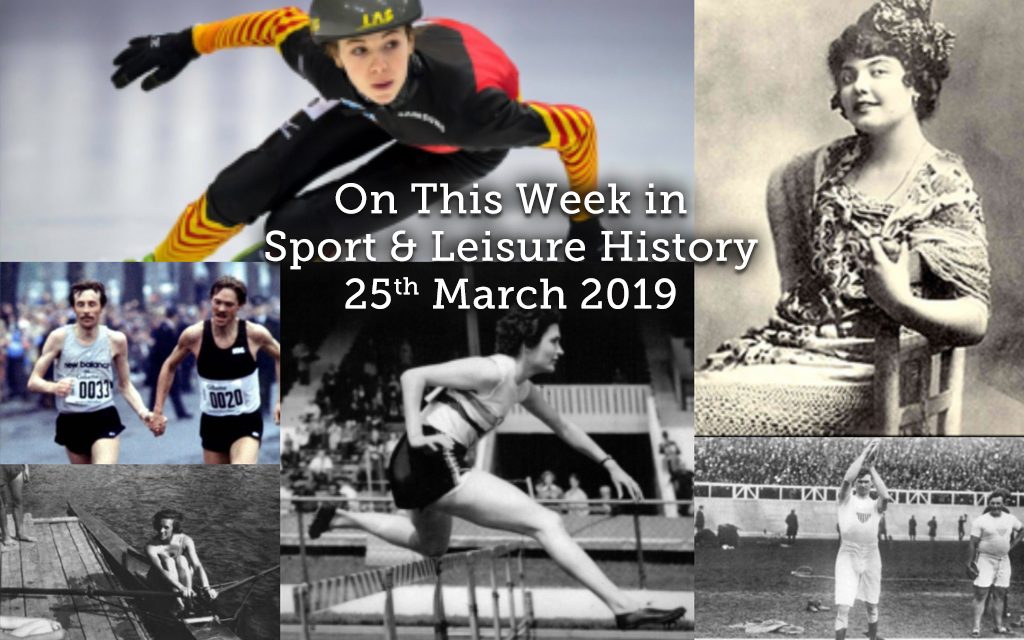
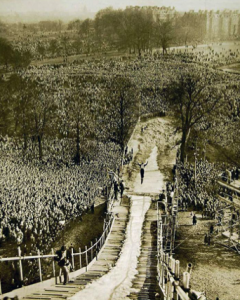
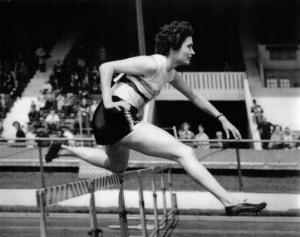
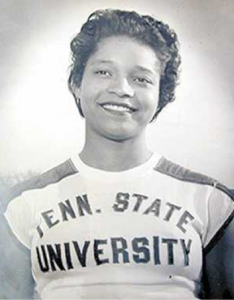
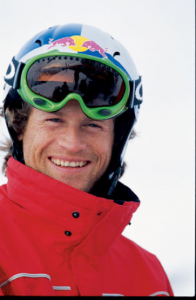
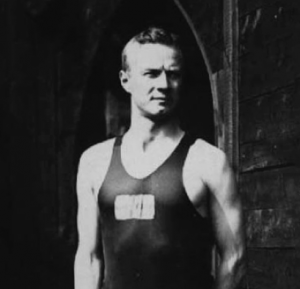
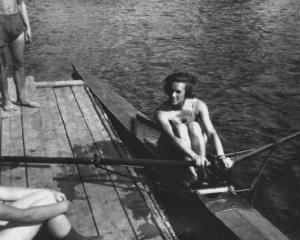
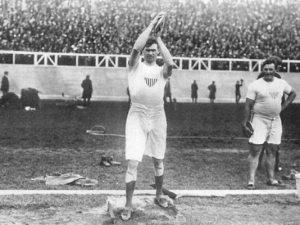
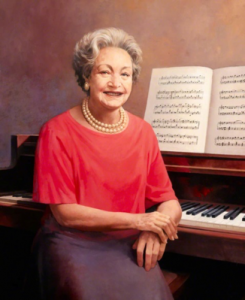
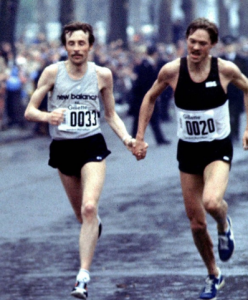
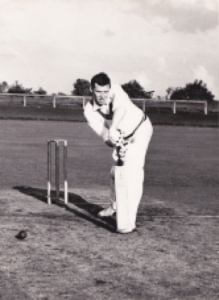

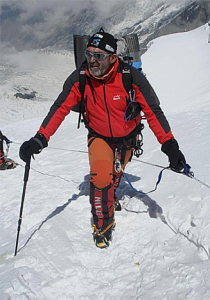






Dear Margaret,
thank you very much for your detailed accounts. Personally, I did not know the stories of British participation to Moscow Olympics.
On 28 March 1891, first World weightlifting competition took place. It included dumbells tests. Two days later, on 30 March, another international competition took place (Levy absent, Zafarana won), with barbell only. IWF does not recognize 30 March competition. It included a deadlift test. Deadlift is part of contemporary Powerlifting programme.
Brava (in Italian language, we decline “bravo”).
Cheers, Gherardo
Thank you Gherardo – really interesting note. Hope you are well. Sorry I will miss you in Madrid, I was planning on coming to the Conference but other things have now had to take precedence – will catch up very soon I hope Kindest Margaret